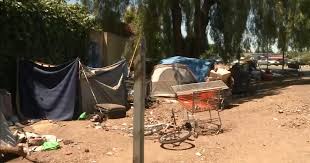Following the confirmation of three cases and the identification of four probable cases connected to homeless encampments in the South Bay area, Santa Clara County health officials are working feverishly to contain a shigellosis outbreak. Concerns concerning the disease’s possible spread among the susceptible homeless population have been raised in light of the identification of eighteen more probable cases throughout the county.
The outbreak was declared by the Santa Clara County Public Health Department (SCCPHD) on Tuesday, June 17. This announcement brought attention to the difficulties caused by the restricted availability of sanitary facilities and clean water in homeless encampments. Poor hygienic conditions are ideal for the growth of shigellosis, a bacterial illness that can cause severe diarrhea, dehydration, and cramping in the stomach. Because of their cramped living circumstances and inadequate sanitation, the Centers for Disease Control and Prevention (CDC) classifies persons who are homeless as a high-risk population for shigellosis.
The epidemic brings attention to the health inequalities that the homeless community faces, even while the SCCPHD stresses that there is no risk to the wider public. In healthy people, Shigella infections usually go away on their own, but in people with compromised immune systems or underlying medical disorders, shigellosis can have significant consequences.
The outbreak highlights how urgently the homeless population needs better access to healthcare and sanitation. In order to locate more people who may be infected and provide them with medical attention, the SCCPHD is putting up endless effort in collaboration with community partners. This includes outreach initiatives that provide free shigellosis testing and treatment to homeless camps.
Aside from responding to outbreaks head-on, public health officials are also concentrating on preventive measures. Aside from giving hand sanitizer and disinfecting wipes to individuals in need, educational materials about good hygiene practices are also being distributed. In order to guarantee that these resources reach the most vulnerable populations, it is probable that the SCCPHD is working in conjunction with nearby homeless shelters and support providers.
The claustrophobic and unhygienic conditions in homeless encampments are a major contributing factor to the outbreak, even though the exact cause is yet unknown. Frequent fecal-oral contact facilitates the easy spread of Shigella germs, hence maintaining good hygiene and handwashing are essential to halting its spread.
An acute reminder of the interdependence of public health is provided by the outbreak. Outbreaks within homeless communities can put a strain on healthcare resources and possibly have a negative impact on the general public, even though the danger to the wider public may be low. Future epidemics can be significantly reduced by funding initiatives that deal with the underlying causes of homelessness, such as a shortage of affordable housing and limited access to therapies for addiction and mental health.
Homeless communities have already experienced similar outbreaks. A similar shigellosis outbreak among the homeless population of Los Angeles County in 2017 brought attention to the continued difficulties in providing basic sanitation and access to healthcare for this vulnerable community.
A wake-up call is provided by the Santa Clara County outbreak. To address the underlying problems that fuel these outbreaks, coordinated measures are needed. This entails increasing financing for outreach initiatives aimed at helping the homeless, granting more people access to sanitary facilities, and making investments in long-term supportive housing options.
Putting the welfare of our homeless community first will not only stop epidemics in the future but also build a more fair and just society for everybody.




